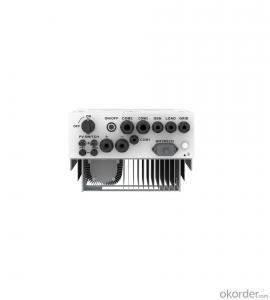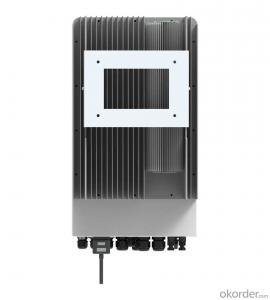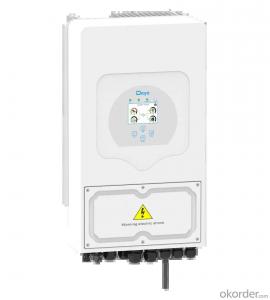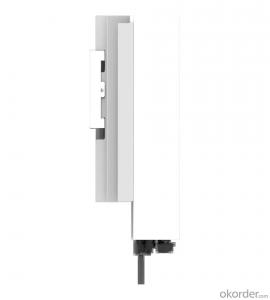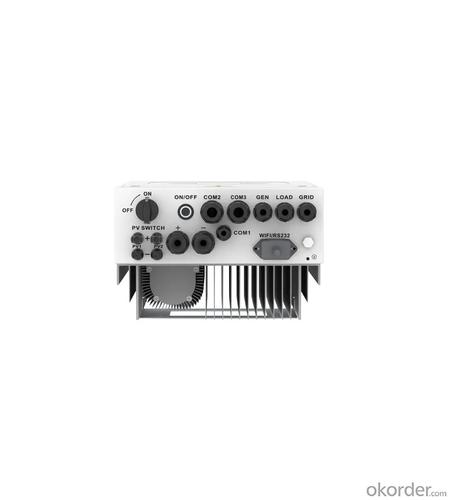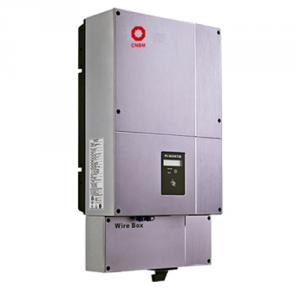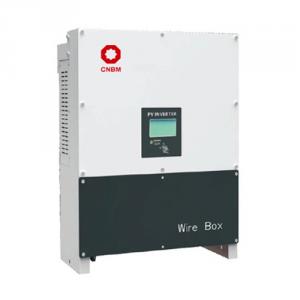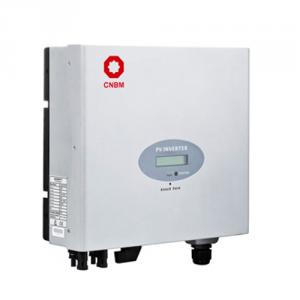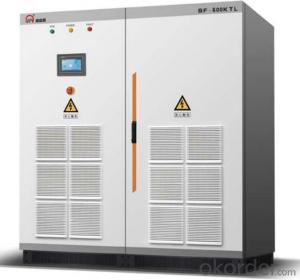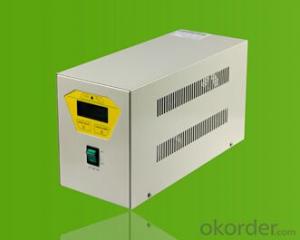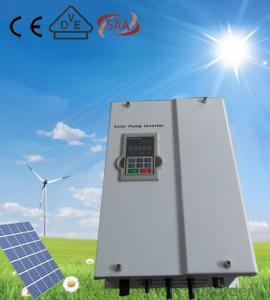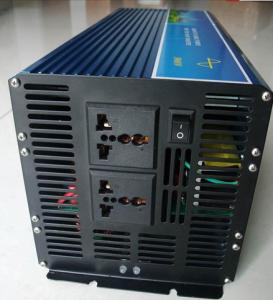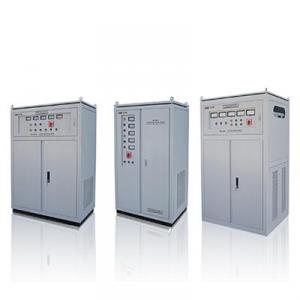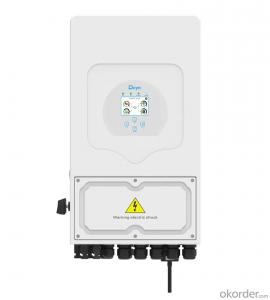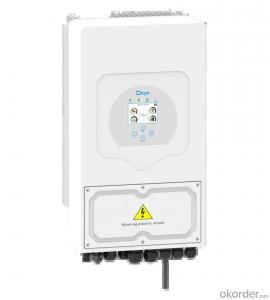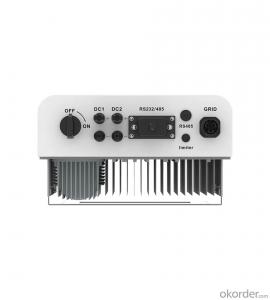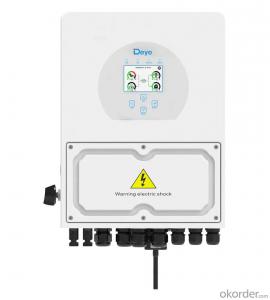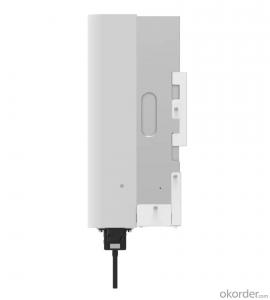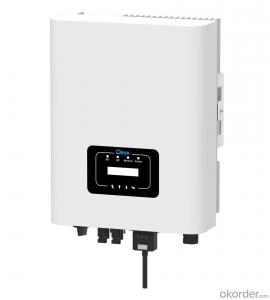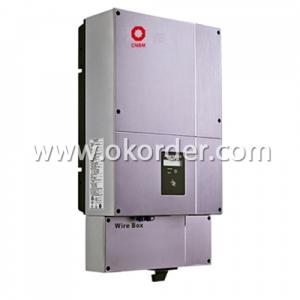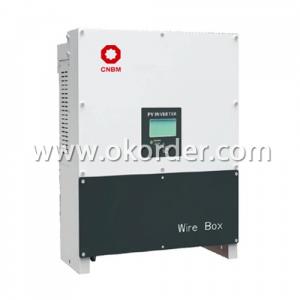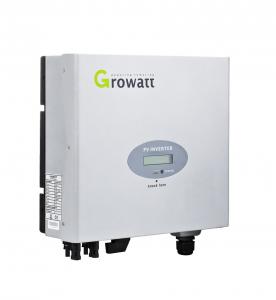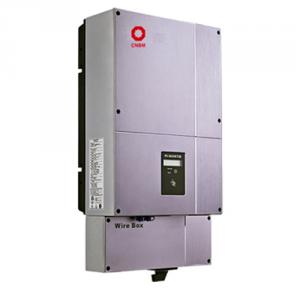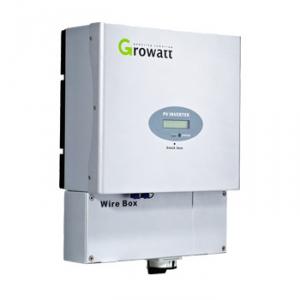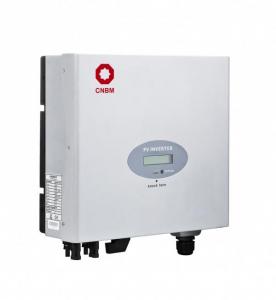120V Solar Inverter - Sun-6k-sg03lp1-eu | 6kW | Single Phase | 2 MPPT | Hybrid Inverter | Low Voltage Battery
- Loading Port:
- Ningbo
- Payment Terms:
- TT OR LC
- Min Order Qty:
- 100 pc
- Supply Capability:
- 5000 pc/month
OKorder Service Pledge
OKorder Financial Service
You Might Also Like
Specification
SUN 6K-SG,hybrid inverter, is suitable for residential and light commercial use, maximizing self-consumption rate of solar energy and increasing your energy impendence. During the day, the PV system generates electricity which will be provided to the loads initially. Then, the excess energy will charge the battery via SUN 6K-SG. Finally, the stored energy can be released when the loads require it. The battery can also be charged by the diesel generator to ensure uninterrupted supply in the event of grid blackout.
100% unbalanced output, each phase; Max. output up to 50% rated power
DC couple and AC couple to retrofit existing solar system
Max. 16pcs parallel for on-grid and off-grid operation; Support multiple batteries parallel
Max. charging/discharging current of 240A
48V low voltage battery, transformer isolation design
6 time periods for battery charging/discharging
| Model | SUN-6K -SG03LP1-EU |
| Battery Input Data | Battery Input Data |
| Battery Type | Lead-acid or Li-lon |
| Battery Voltage Range (V) | 40~60 |
| Max. Charging Current (A) | 135 |
| Max. Discharging Current (A) | 135 |
| External Temperature Sensor | Yes |
| Charging Curve | 3 Stages / Equalization |
| Charging Strategy for Li-Ion Battery | Self-adaption to BMS |
| PV String Input Data | PV String Input Data |
| Max. DC Input Power (W) | 7800 |
| Rated PV Input Voltage (V) | 370 (125~500) |
| Start-up Voltage (V) | 125 |
| MPPT Voltage Range (V) | 150-425 |
| Full Load DC Voltage Range (V) | 300-425 |
| PV Input Current (A) | 13+13 |
| Max. PV ISC (A) | 17+17 |
| Number of MPPT / Strings per MPPT | 2/1+1 |
| AC Output Data | |
| Rated AC Output and UPS Power (W) | 6000 |
| Max. AC Output Power (W) | 6600 |
| AC Output Rated Current (A) | 27.3 |
| Max. AC Current (A) | 30 |
| Max. Continuous AC Passthrough (A) | 40 |
| Peak Power (off grid) | 2 time of rated power, 10 S |
| Power Factor | 0.8 leading to 0.8 lagging |
| Output Frequency and Voltage | 50/60Hz; L/N/PE 220/230Vac (single phase) |
| Grid Type | Single Phase |
| DC injection current (mA) | THD<3% (Linear load<1.5%)< td=""> |
| Efficiency | Efficiency |
| Max. Efficiency | 97.60% |
| Euro Efficiency | 97.00% |
| MPPT Efficiency | 99.90% |
| Protection | |
| Integrated | PV Input Lightning Protection, Anti-islanding Protection, PV String Input Reverse Polarity Protection, Insulation Resistor Detection, Residual Current Monitoring Unit, Output Over Current Protection, Output Shorted Protection, Surge protection |
| Output Over Voltage Protection | DC Type II/AC Type III |
| Certifications and Standards | |
| Grid Regulation | CEI 0-21, VDE-AR-N 4105, NRS 097, IEC 62116, IEC 61727, G99, G98, VDE 0126-1-1, RD 1699, C10-11 |
| Safety EMC / Standard | IEC/EN 61000-6-1/2/3/4, IEC/EN 62109-1, IEC/EN 62109-2 |
| General Data | |
| Operating Temperature Range (℃) | -45~60℃, >45℃ derating |
| Cooling | Natural cooling |
| Noise (dB) | <30 dB |
| Communication with BMS | RS485; CAN |
| Weight (kg) | 20.5 |
| Size (mm) | 330W x 580H x232D IP65 |
| Protection Degree | IP65 |
| Installation Style | Wall-mounted |
| Warranty | 5 years |
- Q: How does MPPT technology work in solar inverters?
- MPPT technology, or Maximum Power Point Tracking, is utilized in solar inverters to optimize the energy output of photovoltaic systems. It works by continuously tracking the maximum power point of the solar panel array, which is the voltage and current combination that allows the panels to generate the maximum power. The MPPT algorithm adjusts the operating voltage and current of the solar panels to match the optimal point, ensuring that the maximum amount of power is extracted from the solar array and converted efficiently by the inverter. By constantly adapting to changing environmental conditions, MPPT technology maximizes the solar energy harvest, improving system efficiency and overall performance.
- Q: Can a solar inverter be used in a mobile or RV application?
- Yes, a solar inverter can be used in a mobile or RV application. It allows the conversion of direct current (DC) from solar panels into alternating current (AC) that can be used to power appliances, devices, and other electrical equipment inside the mobile or RV. This enables the vehicle to utilize solar energy for various power needs while on the move.
- Q: Can a solar inverter be upgraded or expanded?
- Yes, a solar inverter can be upgraded or expanded. Upgrades may involve adding new features or improving the efficiency of the existing inverter. Expansion typically refers to increasing the capacity of the inverter to accommodate additional solar panels. However, the extent to which an inverter can be upgraded or expanded varies depending on the specific model and manufacturer.
- Q: What is the role of a surge protector in a solar inverter?
- The role of a surge protector in a solar inverter is to safeguard the inverter and connected electrical equipment from voltage spikes and power surges that can occur due to lightning strikes, grid fluctuations, or other electrical disturbances. It helps to prevent damage to the inverter and ensures the stability and longevity of the solar power system.
- Q: Can a solar inverter be used with a solar-powered swimming pool heater?
- Yes, a solar inverter can be used with a solar-powered swimming pool heater. A solar inverter converts the direct current (DC) produced by the solar panels into alternating current (AC) that is compatible with household appliances and equipment. Since a solar-powered swimming pool heater also relies on solar panels to generate electricity, the solar inverter can be used to convert the DC power from the panels into the AC power required to operate the heater.
- Q: What are the key factors affecting the warranty coverage of a solar inverter?
- The key factors affecting the warranty coverage of a solar inverter include the length of the warranty period, the reputation and reliability of the manufacturer, the quality of the components used in the inverter, any specified usage restrictions or limitations, and the level of technical support and after-sales service provided by the manufacturer.
- Q: What is the operating temperature range of a solar inverter?
- The operating temperature range of a solar inverter typically varies between -20°C to 60°C (-4°F to 140°F).
- Q: Can a solar inverter be used with a monitoring system?
- Yes, a solar inverter can be used with a monitoring system. In fact, many solar inverters come with built-in monitoring capabilities or can be easily integrated with external monitoring systems. These monitoring systems allow users to track the performance of their solar panels, monitor energy production, and detect any potential issues or faults in real-time. This helps users optimize their solar energy generation and ensure the system is operating efficiently.
- Q: Can a solar inverter be used with a solar-powered electric vehicle charging infrastructure?
- Yes, a solar inverter can be used with a solar-powered electric vehicle charging infrastructure. A solar inverter converts the direct current (DC) electricity generated by solar panels into alternating current (AC) electricity that can be used to charge electric vehicles. This allows for efficient and sustainable charging of electric vehicles using the power generated from solar energy.
- Q: Can a solar inverter be used with building-integrated photovoltaics (BIPV)?
- Yes, a solar inverter can be used with building-integrated photovoltaics (BIPV). BIPV systems are designed to seamlessly integrate solar panels into the building structure, providing both energy generation and architectural functionality. Solar inverters play a crucial role in BIPV systems by converting the direct current (DC) produced by the solar panels into alternating current (AC) that can be used to power electrical devices in the building or fed back into the grid.
Send your message to us
120V Solar Inverter - Sun-6k-sg03lp1-eu | 6kW | Single Phase | 2 MPPT | Hybrid Inverter | Low Voltage Battery
- Loading Port:
- Ningbo
- Payment Terms:
- TT OR LC
- Min Order Qty:
- 100 pc
- Supply Capability:
- 5000 pc/month
OKorder Service Pledge
OKorder Financial Service
Similar products
Hot products
Hot Searches
Related keywords
